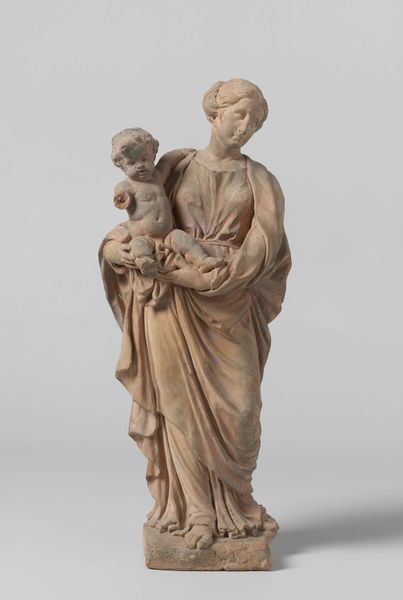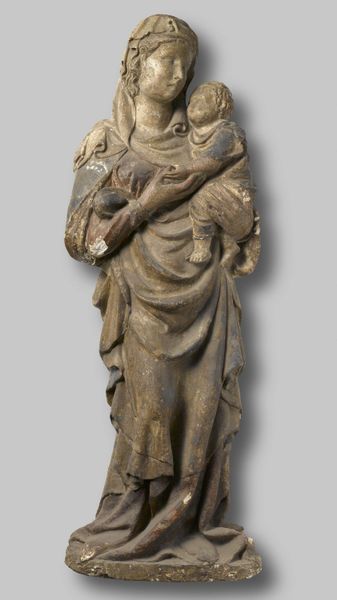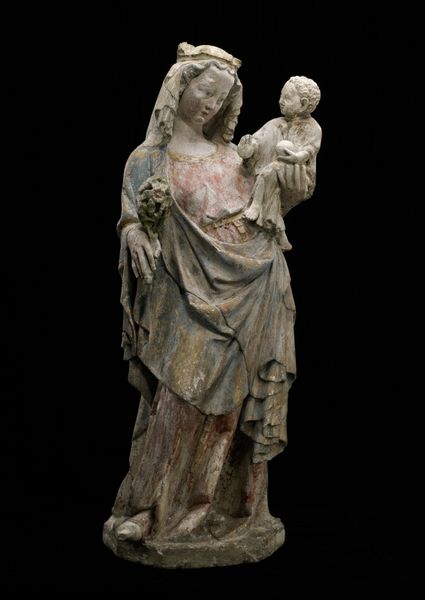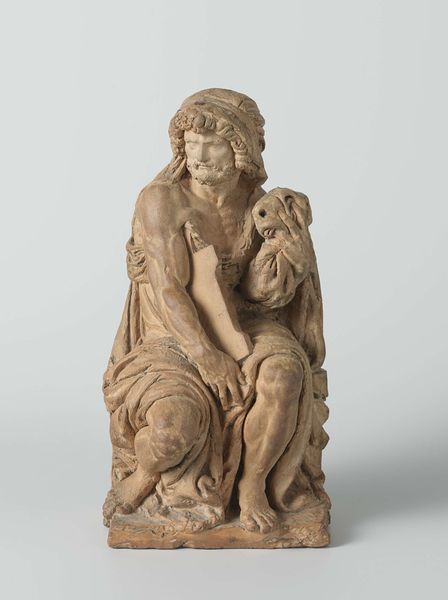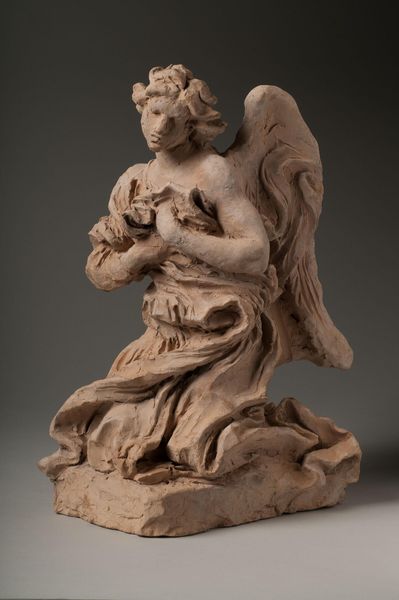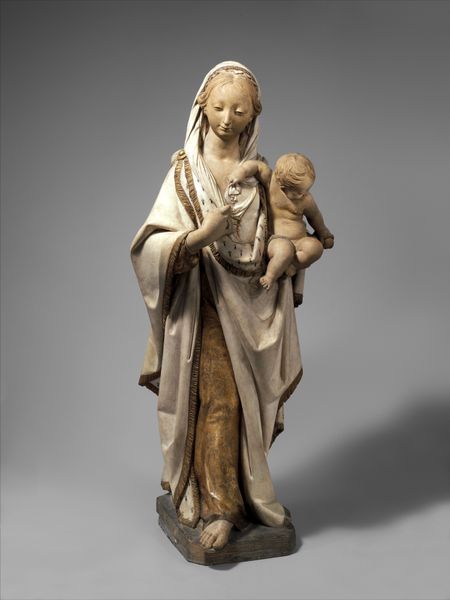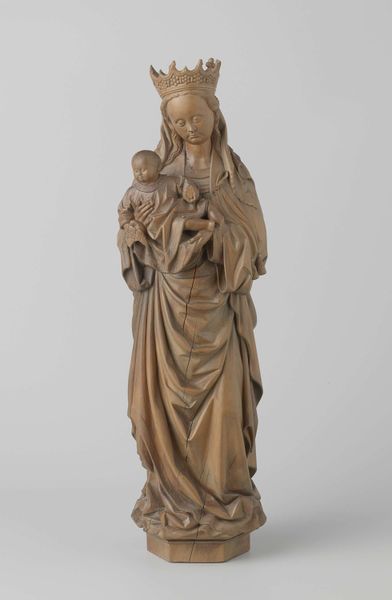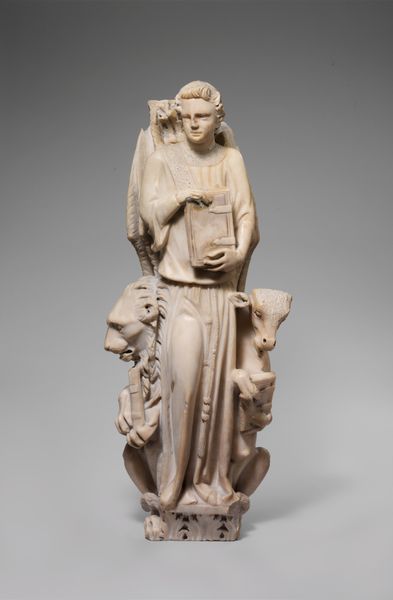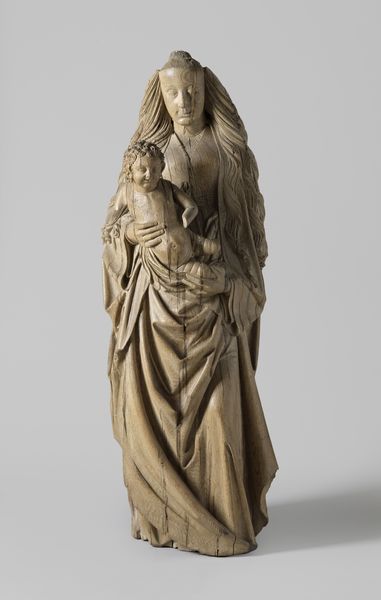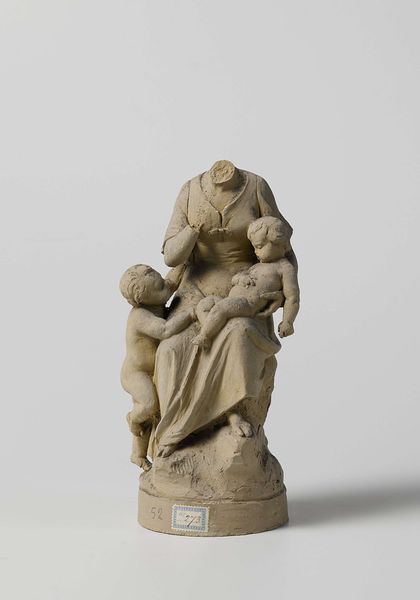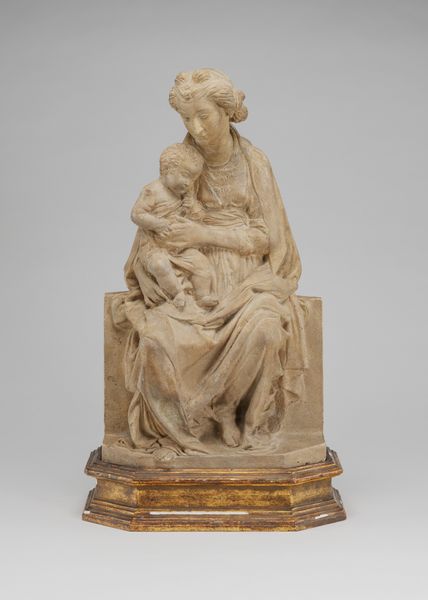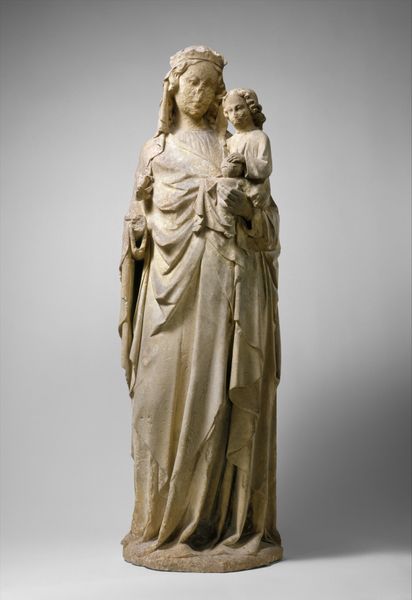
carving, sculpture, wood
#
portrait
#
medieval
#
carving
#
sculpture
#
gothic
#
figuration
#
madonna
#
child
#
sculpture
#
wood
Dimensions: Overall: 66 in. (167.6 cm)---without modern crown
Copyright: Public Domain
Curator: This artwork, crafted sometime between 1437 and 1443, is titled "Standing Virgin and Child" and it comes to us from the Circle of Jakob Kaschauer. The sculpture, made of wood, currently resides at the Metropolitan Museum of Art. Editor: The piece strikes me as serene, but also weighty. The folds in the Virgin's robes create this cascading effect, which emphasizes her verticality but, simultaneously, anchors her to the ground. Curator: Absolutely. And contextually, sculptures of the Virgin and Child served multifaceted roles in late medieval society. Beyond their religious symbolism, they served as powerful embodiments of maternal love and divine authority during a period defined by immense political, social, and religious change. The Virgin as an intercessor was crucial to medieval spirituality. Editor: Note the artist's attention to detail in the drapery; each fold meticulously carved. I'm interested in the use of color here. There are hints of blue beneath the gold, and these choices surely contribute to the piece’s overall expressiveness. The textures seem so palpable. Curator: Indeed. The color palette used in the sculpture—while somewhat faded with time—offers insights into the prevalent artistic tastes and symbolisms of the late Gothic period. It reflected the evolving status of the Church, as well as the changing role of women in society during that time. It's hard to imagine the social stratification without contemplating a figure like the Madonna. Editor: From a formal standpoint, the figure embodies classic Gothic conventions, from the slightly elongated proportions to the gentle S-curve of the body. Yet there's a human tenderness present. That contributes to its immediate appeal. Curator: The enduring power of art lies, perhaps, in its capacity to be reimagined and recontextualized by different eras and societies. "Standing Virgin and Child" isn't just an artwork; it’s a mirror reflecting the shifting beliefs and norms that have defined our collective human experience. Editor: Yes, and analyzing elements like line and form offer direct insight into how art shapes perception. What better demonstration than the sculpture we have contemplated today?
Comments
No comments
Be the first to comment and join the conversation on the ultimate creative platform.
